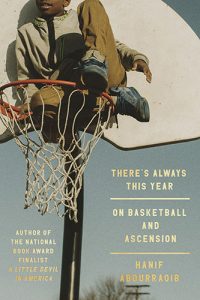Pilgrimage – 2011
Volume 36 Issue 1
2011
annual
John Palen
The pleasure starts as soon as you pick up this magazine. Striking black-and-white linoleum block prints by Melissa West on front and back covers are worth lingering over before you even get inside. Their design and typography call so little attention to themselves that you may not even stop to think about how beautiful type can be when it’s handled well. Instead, you sit back and let yourself be drawn effortlessly into some wonderful writing.
The pleasure starts as soon as you pick up this magazine. Striking black-and-white linoleum block prints by Melissa West on front and back covers are worth lingering over before you even get inside. Their design and typography call so little attention to themselves that you may not even stop to think about how beautiful type can be when it’s handled well. Instead, you sit back and let yourself be drawn effortlessly into some wonderful writing.
My favorite is Mylène Dressler’s essay “Found,” a set of six encounters with people as diverse as a homeless man, two wealthy birdwatchers in Central Park, a woman in the waiting room of a hospital where Dressler’s huband is about to be diagnosed—she doesn’t know this yet—with cancer. Slowly and naturally the linkages emerge in the writer’s constant mission to collect details about “what can happen, which is what a story is.”
Another fine essay, “Qadisha,” by Iver Arnegard, keeps hints of danger and loss alive just beneath the casual surface of a day trip with a friend in the mountains of Northern Lebanon. The author puts us where he is, driving mountain switchbacks, hiking through cedar forests, accepting an old woman’s gift of apples. But at their destination, a cave in a deep gorge, the reality of tragic life breaks through as Arnegard first hears the legend of Saint Miriam, who lived disguised as a man so she could be a monk. Unjustly accused of rape, she spends her last decades alone in the cave. As monks prepare her body for burial, they discover what she had been hiding. “As I look up at the stalactites overhead, a draft stirs from somewhere toward the back of the cavern, where the shale walls disappear into darkness. I try to imagine spending nearly a lifetime here. But I can’t.”
Jennifer Sinor’s biographical note hints that her remarkable piece, “Returned,” might be nonfiction, although it might not. Either way, it’s a powerful journey through a mother’s emotions as she loses and desperately hunts for her young son at the beach. (At the end, she finds him, unhurt.) Other notable essays are Shiv Dutta’s “Teddy’s Story,” and Susan Marsh’s “The Great Oyster Shell Escape.” Rosalyn Parrilla Garvey’s light “Egg-lectic Musings” shows that puns can still be fun.
The poetry ranges over a wide field, from a translation of Rumi, experimental prose poems, an untranslated poem in Spanish by the bi-lingual cleric Samuel Arizpe, and a number of other finely crafted works. My favorites are Marilyn Krysl’s long “Ocean Sob Song Rant Song,” Dennis Maloney’s “For Sandy Taylor,” and Chris Ransick’s “194 Things to Do,” which begins:
First, decipher directions
on the human body,
intricate charts and diagrams,
the loci of muscles and
nerves, the shy imagination.




